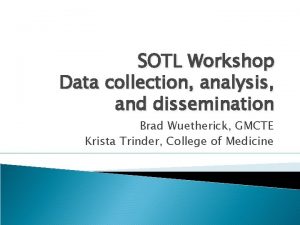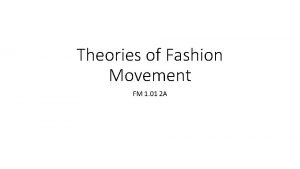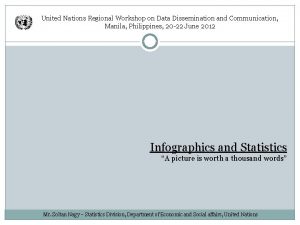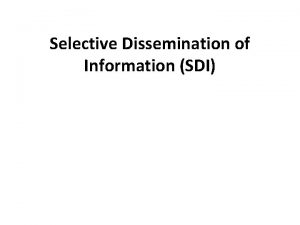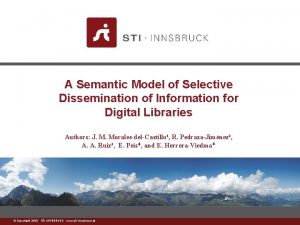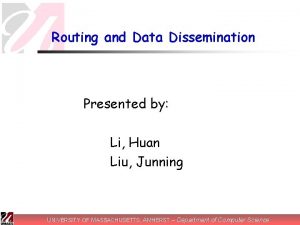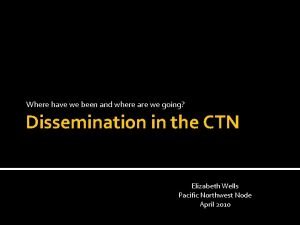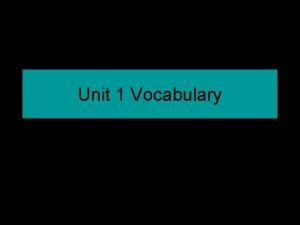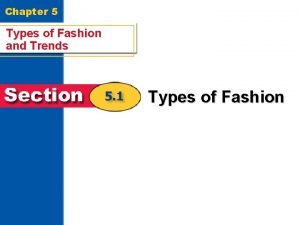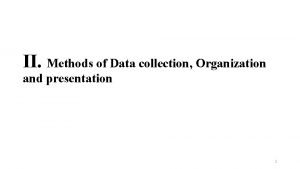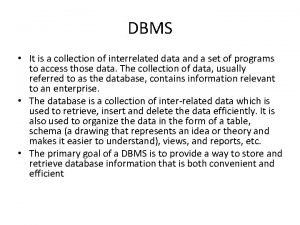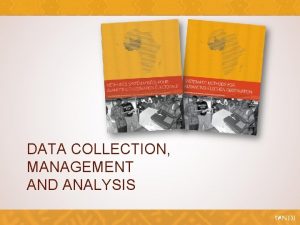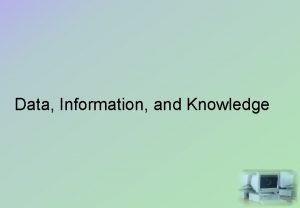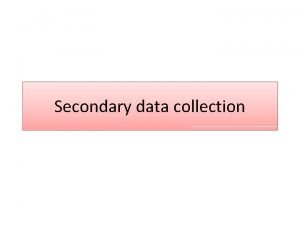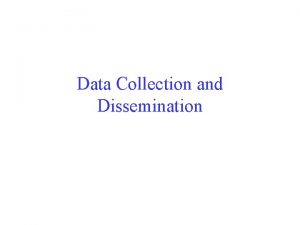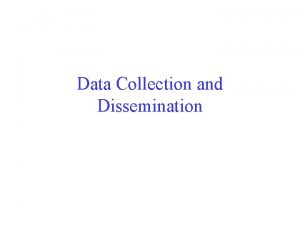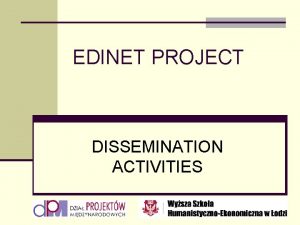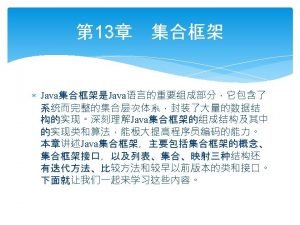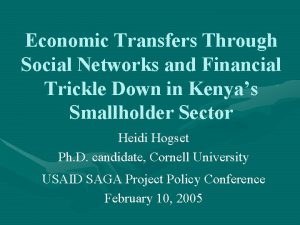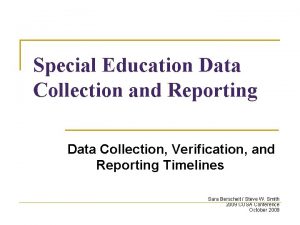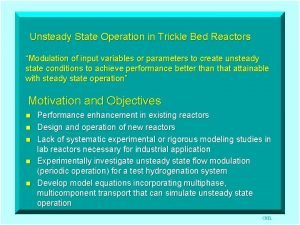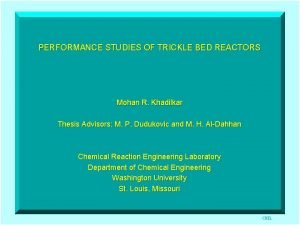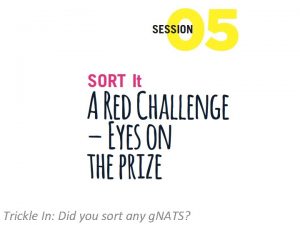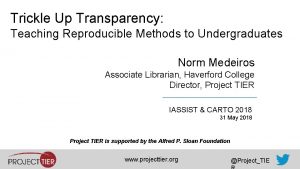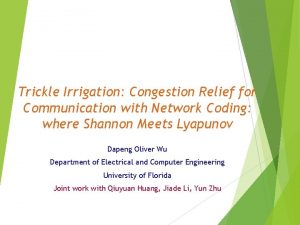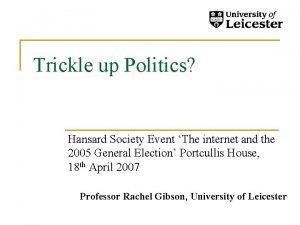Data Collection and Dissemination Outline Data Dissemination Trickle


![Data Dissemination - Trickle [Dissemination_1] 3 Data Dissemination - Trickle [Dissemination_1] 3](https://slidetodoc.com/presentation_image/2fc10780602019c992077142d72c34bc/image-3.jpg)





























- Slides: 32

Data Collection and Dissemination

Outline • Data Dissemination – Trickle – Address single packet • Data Collection – DSF
![Data Dissemination Trickle Dissemination1 3 Data Dissemination - Trickle [Dissemination_1] 3](https://slidetodoc.com/presentation_image/2fc10780602019c992077142d72c34bc/image-3.jpg)
Data Dissemination - Trickle [Dissemination_1] 3

Simple Broadcast Retransmission • Broadcast Storm Problem – Redundant rebroadcasts – Severe contention – Collision

Trickle • Motivation – WSNs require network code propagation • Challenges – WSNs exhibit highly transient loss patterns, susceptible to environmental changes – WSNs network membership is not static – Motes must periodically communicate to learn when there is new code • Periodical metadata exchange is costly

Trickle Requirement • Low Maintenance • Rapid Propagation • Scalability

Trickle • An algorithm for code propagation and maintenance in WSNs • Based on “Polite Gossip” – Each node only gossip about new things that it has heard from its neighbors, but it won’t repeat gossip it has already heard, as that would be rude • Code updates “trickle” through the network

Trickle • Within a node time period – If a node hears older metadata, it broadcasts the new data – If a node hears newer metadata, it broadcasts its own metadata (which will cause other nodes to send the new code) – If a node hears the same metadata, it increases a counter • If a threshold is reached, the node does not transmit its metadata • Otherwise, it transmits metadata

Trickle – Main Parameters • Counter c: Count how many times identical metadata has been heard • k: threshold to determine how many times identical metadata must be heard before suppressing transmission of a node’s metadata • t: the time at which a node will transmit its metadata. t is in the range of [0, τ]

Trickle Maintenance – One Example • Assume – No packet loss – Perfect interval synchronization • How to relax these assumptions? [Dissemination_1]: Figure 3 10

Trickle Maintenance without Synchronization – Short Listen Problem • Mote B selects a small t on each of its three intervals – Although other motes transmit, mote B’s transmissions are never suppressed • The number of transmissions per intervals increases significantly [Dissemination_1]: Figure 5 11

Solution to Short Listen Problem • Instead of picking a t in the range [0, τ], t is selected in the range [τ/2, τ]

Propagation • Tradeoff between different values of τ – A large τ • Low communication overhead • Slowly propagates information – A small τ • High communication overhead • Propagate more quickly • How to improve? – Dynamically adjust τ • Lower Bound τl • Upper Bound τh [Dissemination_1]: Section 5 13

Trickle Complete Algorithm

Data Collection

Data Collection • Link-Quality based Data Forwarding – Wireless communication links are extremely unreliable – ETX: to find high-throughput paths on multiple • Sleep-Latency Based Forwarding – Duty Cycling: sensor nodes turn off their radios when not needed • Idle listening waste much energy [Collection_2] 16

Sleep Latency in Low Duty-Cycle Sensor Networks Sleep now. Wake up in 57 seconds Sleep now. Wake up in 35 seconds D B 35 s latency C 57 s latency A 13 s latency 4 s latency E Sleep now. Wake up in 4 seconds Sleep now. Wake up in 13 seconds [Collection_2] 17

Unreliable Radio Links D B 70% 90% C A 95% 50% E

State-of-the-art Solutions: ETX = 1/0. 5 + 1/0. 5 = 4 B 50%, 100 s ETX only considers link quality 50%, 100 s Expected E 2 E qualitydelay based is 400 s solutions Sole link cannot help Areduce E 2 E delay in extremely low-duty cycle D Expected E 2 E sensor networks! delay is 50 s 40%, 10 s C ETX = 1/0. 4 + 1/0. 4 = 5

State-of-the-art Solutions: DESS = 10 + 10 = 20 s B DESS only considers sleep latency 10%, 10 s Expected E 2 E is 200 s solutions latencydelay based Sole sleep cannot help D A reduce E 2 E delay. Expected in extremely low-duty cycle E 2 E sensor networks!delay is 40 s 100%, 20 s C DESS = 20 + 20 = 40 s

End-to-End Delay vs. Duty Cycle • Suppose one fixed forwarding node – Suffer excessive delivery delays when waiting for the fixed receiver to wake up again if the ongoing packet transmission fails

End-To-End Delay vs. Average Link Quality • Given bad link quality, the end to end delay increases dramatically

Sensor States Representation • Scheduling Bits – (10110101)* • Switching Rate – 0. 5 HZ 16 s round time 10110101 Off On

Data Delivery Process (1 0 0 0 0 0)* (0 1 0 0 0 0)* 1 Sleep latency is 1 (0 0 0 1 0 0 0)* 2 Sleep latency is 2 3 (0 0 0 1 0 0 0)* 4 Sleep latency is 3 End to End (E 2 E) Delay is 6

Main Idea Sleep latency is 1 We should try a sequence of forwarding nodes (0 1 0 0 0 0)* (0 0 0 1 0 0 0)* instead of a fixed forwarding node! (1 0 0 0 0 0)* 1 2 3 4 (0 0 1 0 0 0 0)* Dynamic Switching-based Forwarding (DSF) is important 5 1 st attempt: Sleep latency is 1 in extremely low duty-cycle sensor networks. nd ith attempt: Sleep latency is 1 + 10 * (i-1) 2 2 nd attempt: Sleep latency is 1 + 1 =2 attempt: Sleep latency is 1 + 10 =11

Optimization Objectives • EDR: Expected Delivery Ratio • EED: Expected End-to-End Delay • EEC: Expected Energy Consumption

Optimization Objectives(1) : EDR Forwarding Sequence (100)* 1 2 (010)* EDR = 70% 3 (001)* EDR = 80% EDR: Expected Delivery Ratio. 60% 50% 40% EDR for node 1 is (EDR 1): 0. 6*0. 7 + (1 -0. 6)*0. 5*0. 8 + (1 -0. 6)*(1 -0. 5)*0. 4*0. 9=0. 652 4 (100)* EDR = 90% See Equation (3)

Optimizing EDR Shall we try all available neighbors? (100)* 2 100% 1 (010)* EDR = 70% If both node 2 and node 3 are selected as forwarding nodes: We should only choose EDR 1 a=subset 1 * 0. 7 =of 0. 7 neighboring nodes as forwarding nodes! 100% 3 (001)* EDR = 80% If only node 3 is selected as forwarding node: EDR 1 = 1 * 0. 8 = 0. 8

Optimizing EDR with dynamic programming Try or skip (100)* 1 2 60% 50% (010)* EDR = 70% Try or skip 3 40% Node 4 has to be selected (001)* EDR = 80% Try or drop 4 Select only a subset of neighbors as forwarders (100)* EDR = 90% Then we attempt to add more nodes into the forwarding sequence backwardly.

Distributed Implementation • EDRb(Ø) = 1 – The sink node has no packet loss • EEDb(Ø) = 0 – The sink node has no delay • EECb(Ø) = 0 – The sink node has no energy consumption

Distributed Implementation EDR = 99%, EED = 15, EEC = 2 EDR = 98%, EED = 2, EEC = 1 1 3 EDR = 100%, EED = 0, EEC = 0 sink 2 EDR = 97%, EED = 20, EEC = 5 4 EDR = 90%, EED = 90, EEC = 12

Complete Protocol Implementation at Node e
 Collection analysis dissemination of data
Collection analysis dissemination of data Horizontal flow fashion
Horizontal flow fashion Data dissemination
Data dissemination Data dissemination diagram
Data dissemination diagram Landsat collection 1 vs collection 2
Landsat collection 1 vs collection 2 Documentary payment
Documentary payment Dissemination plan
Dissemination plan Importance of selective dissemination of information
Importance of selective dissemination of information Components of selective dissemination of information
Components of selective dissemination of information Challenges of information dissemination
Challenges of information dissemination Dissemination
Dissemination Dissemination
Dissemination Dissemination
Dissemination Dissemination
Dissemination Ctn dissemination library
Ctn dissemination library How to make a sandwich paragraph
How to make a sandwich paragraph Data collection procedures
Data collection procedures Data collection secondary data sources
Data collection secondary data sources Trickle across theory fashion
Trickle across theory fashion Fashion life cycle
Fashion life cycle Near definition
Near definition Define trickle
Define trickle Trickle across theory fashion diagram
Trickle across theory fashion diagram Sqa economics past papers
Sqa economics past papers Trend vs fad
Trend vs fad Collection organization and presentation of data
Collection organization and presentation of data Interrelated data means
Interrelated data means Collection and analysis of rate data
Collection and analysis of rate data Data entry in gis
Data entry in gis Data collection management and analysis
Data collection management and analysis Raw facts
Raw facts Primary data secondary data
Primary data secondary data Analysis and findings example
Analysis and findings example
